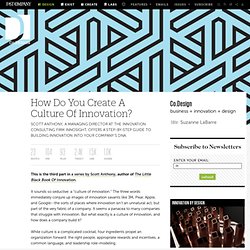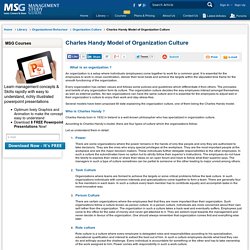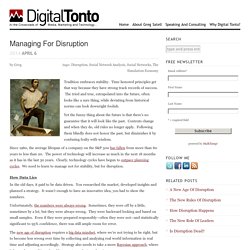

Collective Intelligence & Innovation. 10 Principles of Change Management. Updated: 10 Principles of Leading Change Management This classic guide to organizational change management best practices has been updated for the current business environment.

To read the newest article, click here. Or, to watch a related video, click on the play button above. Way back when (pick your date), senior executives in large companies had a simple goal for themselves and their organizations: stability. Shareholders wanted little more than predictable earnings growth. 5 défis à relever pour embrasser une culture de l'innovation. (avec image) · apressense.
How to Build a Culture of Innovation Pt. 2: The 12 Pillars of Innovation. How Do You Create A Culture Of Innovation? This is the third part in a series by Scott Anthony, author of The Little Black Book Of Innovation.

It sounds so seductive: a “culture of innovation.” The three words immediately conjure up images of innovation savants like 3M, Pixar, Apple, and Google--the sorts of places where innovation isn’t an unnatural act, but part of the very fabric of a company. It seems a panacea to many companies that struggle with innovation. Collective Genius. Google’s astonishing success in its first decade now seems to have been almost inevitable.

But step inside its systems infrastructure group, and you quickly learn otherwise. The company’s meteoric growth depended in large part on its ability to innovate and scale up its infrastructure at an unprecedented pace. Bill Coughran, as a senior vice president of engineering, led the group from 2003 to 2011. His 1,000-person organization built Google’s “engine room,” the systems and equipment that allow us all to use Google and its many services 24/7. Uri Alon: Why truly innovative science demands a leap into the unknown. Charles Handy Model of Organization Culture. What is an organization ?

An organization is a setup where individuals (employees) come together to work for a common goal. It is essential for the employees to work in close coordination, deliver their level bests and achieve the targets within the stipulated time frame for the smooth functioning of the organization. Overcoming Resistance to Change - Isn't It Obvious? How the brain responds to change.pdf. This is Your Brain on Organizational Change - Walter McFarland.
By Walter McFarland | 11:00 AM October 16, 2012 Why can’t we change our organizations?

Year after year, the list of companies that no longer exist because they were unable to evolve continues to grow. Introducing Employee-Engaging Transformation. We just published a Temkin Group report, Introducing Employee-Engaging Transformation.

This is a must-read for anyone who is trying to drive sustainable change across their organization. Here’s the executive summary: Organizations have ambitious goals for improving their customer experience (CX). Managing For Disruption. Tradition embraces stability.

Time honored principles get that way because they have strong track records of success. The tried and true, extrapolated into the future, often looks like a sure thing, while deviating from historical norms can look downright foolish. Yet the funny thing about the future is that there’s no guarantee that it will look like the past. Contexts change and when they do, old rules no longer apply. Following them blindly does not honor the past, but diminishes it by confusing fealty with wisdom. Creating an Innovation Center Infographic.